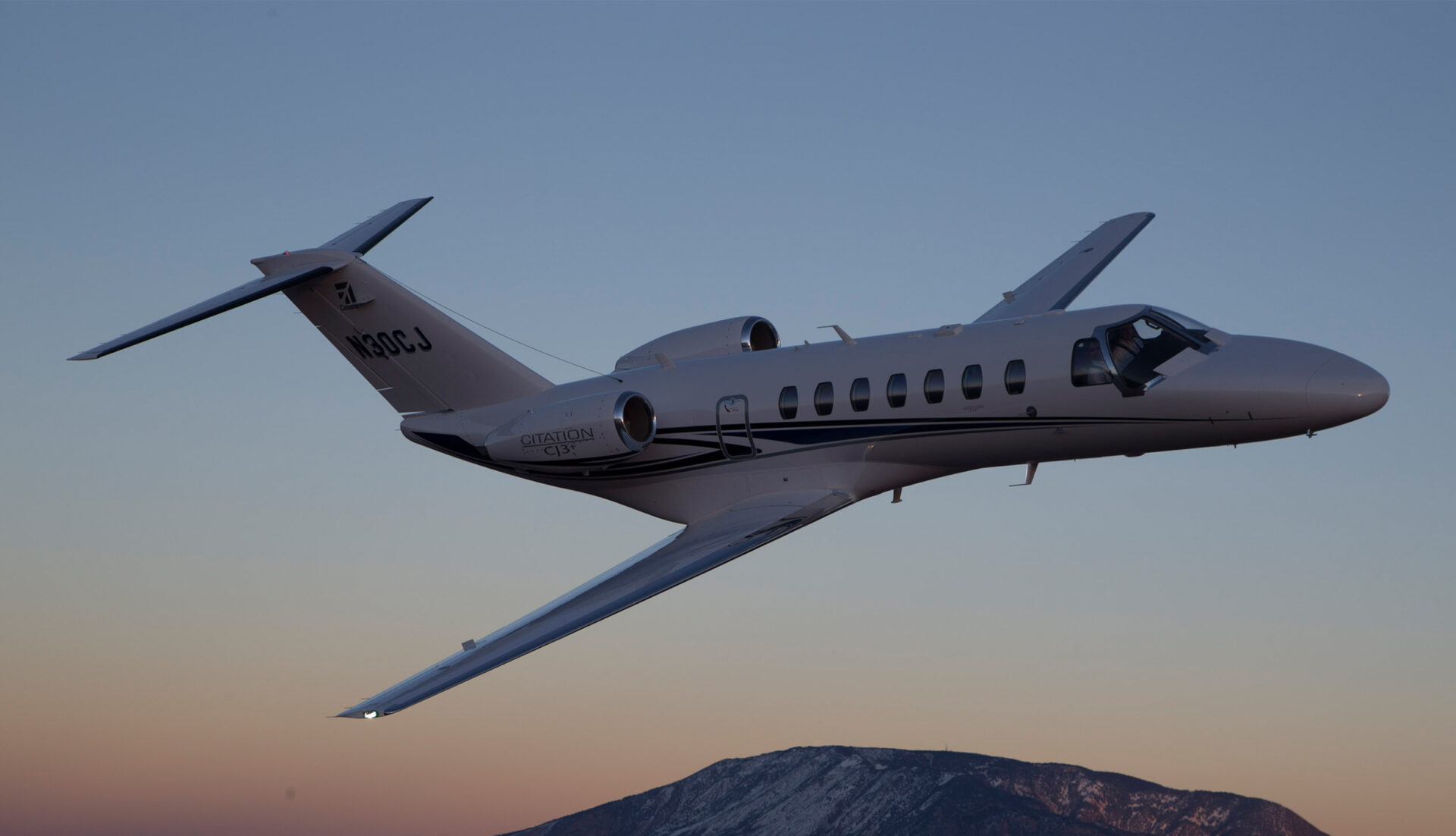Eric Zipkin, President of Tradewind Aviation, has previously described the company’s Pilatus PC-12 as “the Swiss Army Knife of airplanes.” It’s a nod to the plane’s versatility: high climb and cruise speed, slow approach speed, short-field landing capability, and sheer durability. The plane was designed to operate in very hostile environments (Alaska’s North Slope and Southern Africa’s desert landing strips).
Adam Schaefer, Tradewind’s Director of Operations, has just as pithy a description of Tradewind’s other mainstay plane, the jet-engine, 7-passenger Citation CJ3: “Small jet package, big jet capability.”
“The big thing for people to understand,” he adds, “is that this plane has the same capabilities as a big airliner.”

Tradewind uses the CJ3 on trips longer than 500 miles because at that distance, the plane’s higher cruising speed (470 mph) allows for a faster flight and more passenger comfort. “The beauty of the CJ3 is going from New York to Florida non-stop at 45,000 feet,” Schaefer says. That trip (roughly 1,000 miles) takes 2.5 hours, about the same as a B757 and 2 hours faster than the PC-12.
“The cabin is also very comfortable,” says Schaefer. “All of our planes have leather executive seats, but the CJ3’s are a little bigger and a little comfier. They lay a little flatter, and the plane’s a little quieter.”
The biggest anxiety people usually have about small aircraft is how they handle in less than ideal weather. Here the CJ3’s top cruising altitude—45,000 feet—comes into play, allowing it to fly above the weather. “We often look down on a line of thunderstorms,” says Schaefer. The plane is also equipped with a satellite weather system (just like a B757), so the pilots can react to weather systems miles ahead, as well as onboard weather radar so they can respond to weather dead ahead.
“For us to go 25 miles out of our way to avoid weather only adds 4 minutes to the flight time,” says Schaefer.

That other bête noire of passengers—turbulence—can be handled in a variety of ways. Schaefer says the first option is just slowing down, which is easy given the CJ3’s range of cruising speeds. If the turbulence is going to persist, the pilots can look for smoother air above or below. On takeoff, the CJ3’s fast climb-rate means that turbulence encountered is quickly left behind.
The CJ3 was also designed with safety uppermost. The plane can fly on one engine. In fact, if an engine fails on takeoff, says Schaefer, the CJ3 can climb faster than it does on two, allowing the pilots to position it quickly for a return to the airport.
Furthermore, the CJ3’s collision-avoidance system is nearly identical to those on large commercial jets. It doesn’t just register dangerous proximity of another aircraft, but instructs the pilot to climb or descend to avoid collision.
The CJ3 cockpit is “dark”—pilot parlance for a flight-display system that doesn’t require constant monitoring. “A flashing light means that’s something you have to pay attention to,” says Schaefer. This design minimizes distraction, giving pilots what’s known as “more eyes-up time at the controls.” Translation: Looking out the cockpit window and paying attention to the yoke.
Each pilot also has his own primary flight display. These flank a center display that contains other pertinent information (fuel flow, engine performance). Should one of the primary flight displays fail, the information there can be moved to the central display, a safety feature known as redundancy.

Although Tradewind uses the CJ3 for longer-distance trips such as New York to the Caribbean, the plane also has excellent short-field performance, meaning it can land on runways as short as 4,000 feet (such as South Carolina’s Hilton Head airport) whereas most aircraft this size require at least 5,000 feet. The short-field capability is due to the CJ3 wingspan—almost as long as the fuselage—which produces lots of lift and glide and allows the plane to land at a relatively low speed (120 knots). “This gives the CJ3 an additional measure of safety,” says Schaefer, “because the slower you’re going on landing, the less chance there is for an issue.”
And unless the fog is down to the ground or the clouds at rooftop level, you are going to land. On final approach, says Schaefer, sounding like a proud father, “The CJ3 is equipped to bring you down to 200 feet one-quarter mile from the runway and then we take it from there.”

